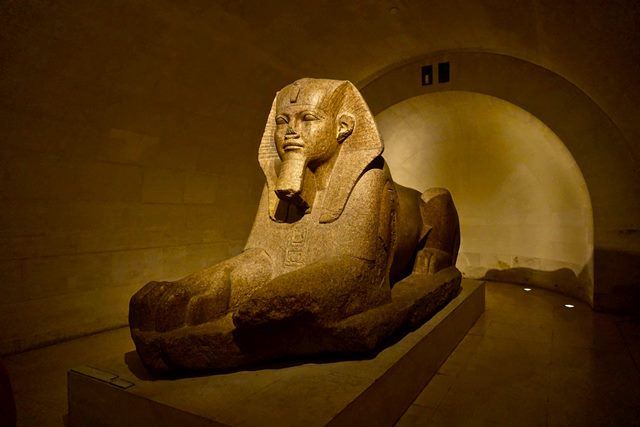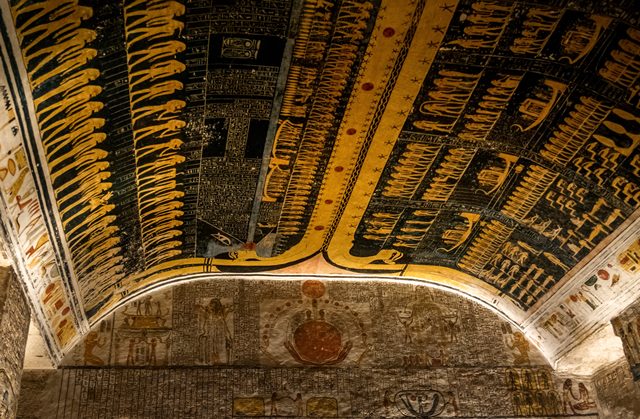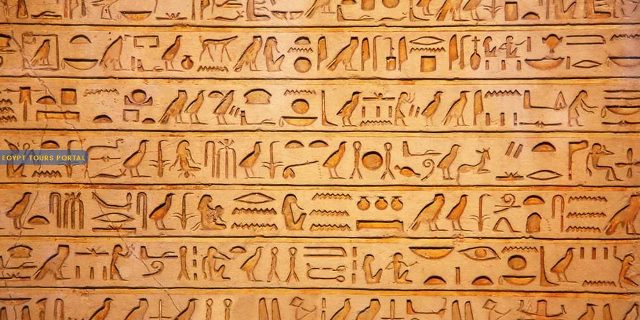Most people are under the impression that people who lived thousands of years ago were not as advanced as we are today. Part of this is true. But that claim doesn’t portray the full picture. Many discoveries have been made about how people lived, and you’d be surprised at how many innovative works existed then. Surprisingly, some of these fascinating works originate from Africa. Here, we detail ancient Egyptian inventions that will surprise you.
Ancient Egyptians were the forerunners of a vast and astonishing array of innovations that are still useful to us today. They worked through several decades of inventions and innovations. Thousands of years after, many of them are still significant in our society.
However, it is disappointing to learn that some of the credits for these inventions are likely attributed to others. Or they are frequently not even acknowledged.

Read: Facts About Ancient Egyptians That European Colonialism Has Misconstrued
Whatever it may be, the fact that the ancient Egyptians flourished for thousands of years and ushered in what was arguably the most complex civilization the world had ever known still remains.
You might not even know that some of the things you enjoy today are solely from ancient Egyptian inventions. This is why we have compiled a number of ancient Egyptian inventions you should know. From the simplest things to the biggest ones, you would totally be surprised, and you would find these discoveries intriguing.
Ancient Egyptian Inventions
The ancient Egyptians were people of great wisdom and creativity. They were highly creative and excellently blessed with hands to work on what their minds had imagined. Below are some inventions from ancient Egypt that you probably never knew about:
Writing Can Be Traced Back to Ancient Egypt
Drawings have long been used to tell stories. In fact, cave paintings from 30.000 B.C.E. have been discovered in France and Spain. But it took thousands of years for the earliest writing systems to emerge from Mesopotamia and Egypt. This was the first time pictures, and paintings were turned into the first written language.

The earliest pictograms, which date back to 6000 B.C.E., were used to create the Egyptian writing system. Pictograms were straightforward illustrations of the words they stood for, but they had some restrictions. Egyptians eventually added other components to their writing systems, such as alphabet-like letters that represented specific sounds and other characters. This enabled them to write out names and abstract concepts.
The Egyptians and Mesopotamians were the first to codify their own languages into writing systems. Pictograms, or pictures, were used for all early types of writing. All writing systems were created in this manner. But as the images were developed into abstract shapes, the original forms were lost. The intriguing thing about the Egyptians is that, although switching to the abstract Hieratic writing system, they purposefully left the hieroglyphic images in their original configurations.
Paper and Ink (The Papyrus Sheets) Are Part of Ancient Egyptian Inventions
Ancient Egyptians created paper and ink, what we now associate with the written word. However, it was not ‘paper’ as we know it now, but a predecessor was known as papyrus. It took its name from the green reeds that flourished along the Nile.
Researchers have been trying to pinpoint the precise procedures the Egyptians used to transform this plant into a writing surface for many years, but the records are frustratingly unclear. The first stage, however, is believed to have included cutting the stem into strips. They were then soaked to extend the fibers and placed down in overlapping layers. Although ancient papyrus was far from as smooth as modern paper, it was compressed — either hammered, rolled, or pressed — until the layers melded to produce a flat surface. Interestingly, documents made of papyrus were extremely durable due to the dry atmosphere in Egypt.

There is no denying that the Chinese revolutionized the world with the development of paper around 140 BCE. However, many people are unaware the Egyptians had created a superior alternative from the papyrus plant thousands of years before. This stiff, reed-like plant flourished (and still does) among other locations along the swampy banks of the Nile. Its hard, fibrous inside was perfect for producing sturdy writing sheets as well as mats, sandals, sails, and other everyday items used in ancient Egypt. After the sheets were created, they were frequently strung together to create scrolls, which were then filled with everything from literary works to music to religious writings.
The lengthy method of making papyrus was maintained as a closely-guarded secret by the ancient Egyptians. And this allowed them to sell papyrus sheets throughout the area. Unfortunately, the method was eventually lost because it was never recorded.
A Later Discovery About Papyrus Sheets
Then in 1965, Dr. Hassan Ragab discovered a way to produce papyrus sheets. The Egyptians invented the less laborious technique of employing ink, while the Mesopotamians carved their letters into clay, stone, and wax.
They created this by mixing a variety of pigments and ores with water to create a viscous liquid that could be used to apply paint with a brush or stylus to papyrus. The Egyptians were able to create ink in a variety of colors by combining various natural materials, such as copper, iron, quartz, and malachite, although red, black, and blue are the most popular.
Makeup and Wigs Are One of Ancient Egyptian Inventions
You’ll agree that cosmetics have never gone out of vogue since it was created in 4000 BCE. It probably never will. Even more astounding, certain aesthetically oriented societies continue to use the same methods developed by the Egyptians thousands of years ago to produce cosmetics. They created the black ointment known as kohl, which is still widely used today, by combining soot with a mineral known as galena.

Tinting the ointment with a mineral called malachite and galena allowed them to manufacture green eye makeup. However, the use of makeup was not just for ladies among the ancient Egyptians. Then, status and looks were closely related, and the more makeup the upper class wore, the better.
The Egyptians were known for applying eyeliner with a notoriously heavy hand, but fashion was only one factor. A thick covering of the substance, according to their beliefs, might treat a number of eye conditions and even protect them from the evil eye.
Wigs were also very popular among Egyptian women. The royal family had their wigs fashioned completely of human hair, frequently from Nubian peoples, in order to mimic the Afro style that was fashionable throughout the second millennium BC, while the least expensive and most widely accessible wigs were constructed of vegetable fibers. Such accessories were frequently seen worn underneath the crown of Queen Nefertiti.
Calendar and Time Keeping
Without a calendar to remind us of our doctor’s appointments and key meetings, many of us would be lost. The sexagesimal system was developed by the Mesopotamians, who pioneered the way when it came to time. However, the calendar and timekeeping systems we use today were created by the Egyptians. The Egyptian calendar had twelve months of 30 days each, with an extra five days at the end of the year to make a total of 365 days, all based on the cycles of the sun and moon. It is obvious why this invention has endured through the ages. The Egyptians, unlike us, could only distinguish between three seasons, which helped farmers plan when to plant and harvest their crops.
Not only were the Egyptians the first to map out the days, months, and years that are still used today, but they also invented the first timepieces. The earliest known timepiece, discovered in the Valley of the Kings in 2013, dates back to about 1500 BC. But this wasn’t the first instance of a timekeeper. Huge obelisks were first built 2000 years ago, and they were used, together with the first calendar and the water clock, to tell the time by the way their shadows fell on the engravings.
Toothpaste and Breath Mint
In order to make Egyptian toothpaste, various salts, dried flowers, pepper, ashes, and even eggshells were crushed and combined. Then, either with the finger or a crude toothbrush constructed from frayed twigs, this rough paste was scrubbed in. Even while the toothpaste cleaned the teeth surprisingly well, the harsher texture caused the gums to bleed. Thus it’s possible that it actually caused more harm than good.
The Egyptians also invented breath mints for people who fell victim to the dangers of dental disease. Ancient Egyptians used drops of boiled honey infused with fragrant herbs and spices like frankincense, myrrh, and cinnamon to mask the unpleasant odor of decaying teeth. Additionally, they included mint in their toothpaste to freshen the breath, a practice that is still common in dental products today.
Medicine
In addition to developing several novel medical ideas, the Egyptians also created the first public health system in history. The artisans and laborers building the royal tombs in the surrounding Valley of the Kings built the hamlet of Deir el-Medina around 1500 BC. These workers received a monthly salary, a food supply, and servants in addition to a shared doctor who would take care of their medical issues and aid in the healing of any ailments. The laborers are said to have continued to receive their rations while ill: the earliest known instance of sick pay!
Read: Imhotep: The Real Father of Medicine is African!
Early civilizations, including those that developed in Mesopotamia, had generally considered physical and mental diseases as the work of the gods and attempted to treat them with religious and magical treatments applied by priests or even exorcists. The history of medicine as we know it now may be traced back to ancient Egypt; and Imhotep. The Egyptians took a much more scientific approach to treat illness, developing medications from natural resources, such as minerals, herbs, and animal products, and also performing early versions of surgery, even if the supernatural still played a significant role in their understanding of health. There were places called Houses of Life where physicians and monks would practice medicine as early as 2200 BC.
Before you go…
Hey, thank you for reading this blog to the end. I hope it was helpful. Let me tell you a little bit about Nicholas Idoko Technologies. We help businesses and companies build an online presence by developing web, mobile, desktop, and blockchain applications.
As a company, we work with your budget in developing your ideas and projects beautifully and elegantly as well as participate in the growth of your business. We do a lot of freelance work in various sectors such as blockchain, booking, e-commerce, education, online games, voting, and payments. Our ability to provide the needed resources to help clients develop their software packages for their targeted audience on schedule is unmatched.
Be sure to contact us if you need our services! We are readily available.
Put Your Tech Company on the Map!
Get featured on Nicholas Idoko’s Blog for just $200. Showcase your business, boost credibility, and reach a growing audience eager for tech solutions.
Publish Now










